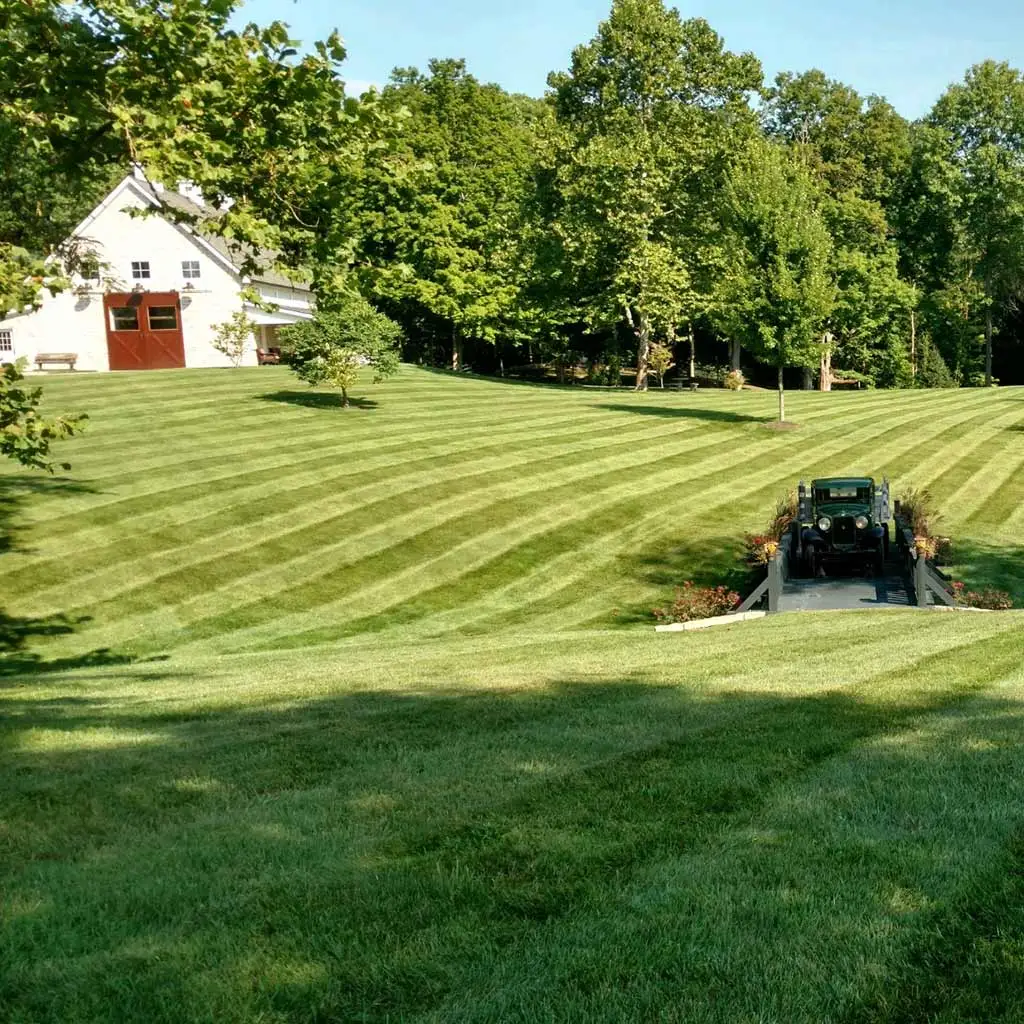Dollar spot is a prevalent fungal disease that affects lawns in Ohio, causing small, dollar coin-sized brown patches on the grass blades. If dollar spot is affecting your lawn, it's crucial to contact lawn care professionals immediately, as the disease can rapidly spread and cause significant damage. Pros will be able to confirm whether it's infecting your turf and administer curative treatments to eliminate it. Then, you'll want to schedule lawn care services, such as fertilization, aeration, and overseeding, to help restore your turf to its previous healthy state.
What is dollar spot, and what kind of damage can it cause?

Dollar spot is a common lawn disease that affects many lawns in Ohio, typically appearing as small, circular straw-colored or bleached patches on the grass blades resembling the size of dollar coins, hence the name. However, these spots may gradually become larger and merge, forming patches of thin, browning turf and causing severe damage if left untreated. Not only does dollar spot compromise your lawn's health but its curb appeal.
Besides the distinctive patches, other signs of dollar spot include a fuzzy, web-like mycelium across your lawn that you can see when there's dew.
If you think your lawn is infected with dollar spot, contact lawn care experts right away!
If you think your lawn may be suffering from a dollar spot infection, it is crucial that you reach out to lawn care professionals as soon as possible. They have the knowledge and expertise to diagnose the disease and confirm whether dollar spot is indeed the issue affecting your lawn. Once confirmed, professionals can provide curative treatments to eliminate dollar spot from your lawn. These fungicide treatments are applied to the affected areas, stopping the spread and preventing it from causing additional damage.
Schedule lawn care services to help your lawn recover after a dollar spot infection.
After successfully eradicating a dollar spot infection, your lawn will still be weak and unhealthy. To aid in its recovery and promote new, resilient growth, you'll want to schedule restorative lawn care services, such as fertilization, aeration, and overseeding.
Fertilization provides your lawn with the nutrients it needs to recover from dollar spot damage, rebuilding its strength and promoting root development, plus replenishing its desirable green color. Aeration is another vital service that will help nurse your turf back to health after a dollar spot infection. Dollar spot can lead to compacted soil, hindering the flow of air, water, and nutrients to the roots of your grass. Aeration reduces soil compaction, allowing better penetration of these essential resources and helping your lawn recover quickly. Lastly, overseeding is an effective way to fill in the bare spots left by the disease with new, resilient grass growth. This will make it thicker and denser, enhancing its curb appeal and building its defenses against stressors in the future.
Give us a call today to schedule our lawn disease control service!
When it comes to combatting a dollar spot infection on your lawn, our team at Hoffmans Lawn & Fertilization are the ones for the job! We provide our professional lawn disease control service, where we will apply highly effective curative treatments to eliminate this fungal infection. What's more, we have all the lawn care services you need to aid in revitalizing your lawn's health, including fertilization, aeration, and overseeding. However, we also provide preventative treatments to keep it from causing problems in the first place!
We proudly offer our lawn disease control service to residential and commercial properties, along with HOAs, in Delaware, Lewis Center, Powell, and surrounding areas in Ohio. Call us today at (740) 318-5296 to schedule and make dollar spot a problem of the past.




Comments (0)
Thanks for your comment!
Thanks for your feedback! Your comments have been successfully submitted! Please note, all comments require admin approval prior to display.
Error submitting comment!
There is a problem with your comment, please see below and try again.